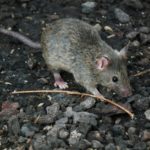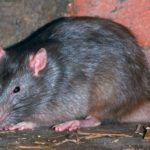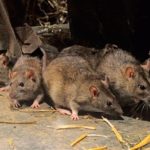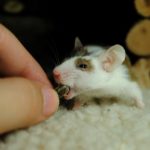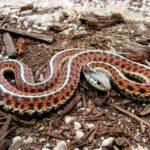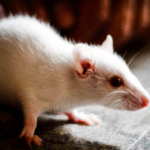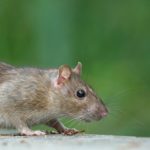Gray rat
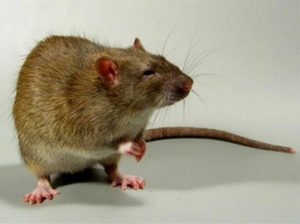 Gray rats are not inferior to humanity in numbers, intelligence, power, and nastiness. Modern man himself creates the environment. Therefore, environmentalists, instead of the expression “people”, use the phrase anthropogenic factor. In the built environment, things are not the same as in nature. And the animals here are flourishing those who are friends with man. Exceptions are rare, but they are. One such exception is the gray rat.
Gray rats are not inferior to humanity in numbers, intelligence, power, and nastiness. Modern man himself creates the environment. Therefore, environmentalists, instead of the expression “people”, use the phrase anthropogenic factor. In the built environment, things are not the same as in nature. And the animals here are flourishing those who are friends with man. Exceptions are rare, but they are. One such exception is the gray rat.
The gray-haired rat familiar to all of us did not always live in Europe. She is a native Asian, a resident of Cambodia, Laos and Vietnam. And to us in Europe came exclusively on the ships of travelers. By the way, the rats to cozy shelters remained from the same forest life in nature. Rodents are drawn to mink. There they feel relatively safe. There, they are used to storing supplies and talking to their fellows. However, the absolute majority of rodents are colonial animals. Before “settling down” in the city, the rat was one of the most pronounced rodents of the “sole bearers”. Neither in Asia nor in Africa were rats settled in large colonies. And now they are forced to unite in large flocks, in order to somehow exist in the human world.
Now, human architecture itself opens the door to a rodent. As soon as sewer pipes appeared in the cities, these spaces were ready for an invasion of rats. The current metropolis with its extensive underground utilities, as if specially built for rats. Rodents in architectural cavities are rightly regarded as their own ecological niche. Gray rats are blamed for thousands of accidents on underground power grids. And not without reason. Various wire connections, cable bundles, like a magnet, attract rats to themselves. Not because rodents love the taste of insulating materials, they just think that some more nourishing substance is hidden under the shell. These are rodent innate skills. So the rat examines the insulation of electrical wires for suitability in the feed. What is the main danger posed by rats? Of course, it is not that they impinge on human products. The main danger from rats is contagious diseases. And it is not the rodents themselves that carry them, and in most cases the parasites living on rodents. Gray rats are carriers of the most dangerous diseases – the plague and another 20 different diseases. The rat bite can send a person to a hospital bed or even to the grave. Such people infected with these two dangerous diseases are dangerous for other people. There are no epidemics in our big cities just because rats are healthy, bye !!!
On the ready moves, the rats move to all points of the urban space. Elevators, ditches, garbage chutes, routes of electricity, the same as for us underpasses and subway lines. Even the toilet can serve as channels of movement of rodents. Using the fecal collector, the rat can climb to the fourteenth floor. The rats calmly move both under our feet and above our head. The current rate has become so close to the person, and with the fact that it surrounds the person that the cat does not frighten him. In rats, the optimal ratio of the length of the jaws and the cranial vault. She can calmly nibble food, and her brain is not small. In predators, as a rule, the bias towards the jaws, and primates have a high skull dome. The rat has not yet made the choice to bite or think.
Having moved from the forest to the cities, the rat learned the human experience. And unlike other animals, they took the rule “in crush, but not mad.” Although terrible crowding causes great inconvenience to rodents. They scratch each other and tightly intertwined with their tails, but, nevertheless, stick together. In such conditions, every disease spreads rapidly. Epizootii often devastate rat habitats, and the rats themselves often die from tumors, both malignant and benign. Blame the crowding.
It is not by chance that a rat is a laboratory animal. And not only white, but gray. In its genome, much coincides with the human, and individual organs give almost one hundred percent compliance. This allows rats to vaccinate our viruses and test our medicines on them. For this we say thank you rats. Some scientists believe that they are our immediate predecessors. The human embryo is exactly the rat developmental path.
Not so long ago, scientists found that the rat community has a hierarchy, like people. Slavery of weak individuals strong. This is confirmed by research. The essence of the study was as follows: six healthy individuals launched into the aquarium. Through the tunnel you could get to the food. After studying the route of the rats, the tunnel began to fill with water. When the level of the liquid reached the limit, the exit in rats was left alone – to dive for food means to risk. Not many decided to do this, it would seem the most courageous and strong. Leaders of the group. But in the end they were left hungry. Why? Rats that dive for food are servants.
